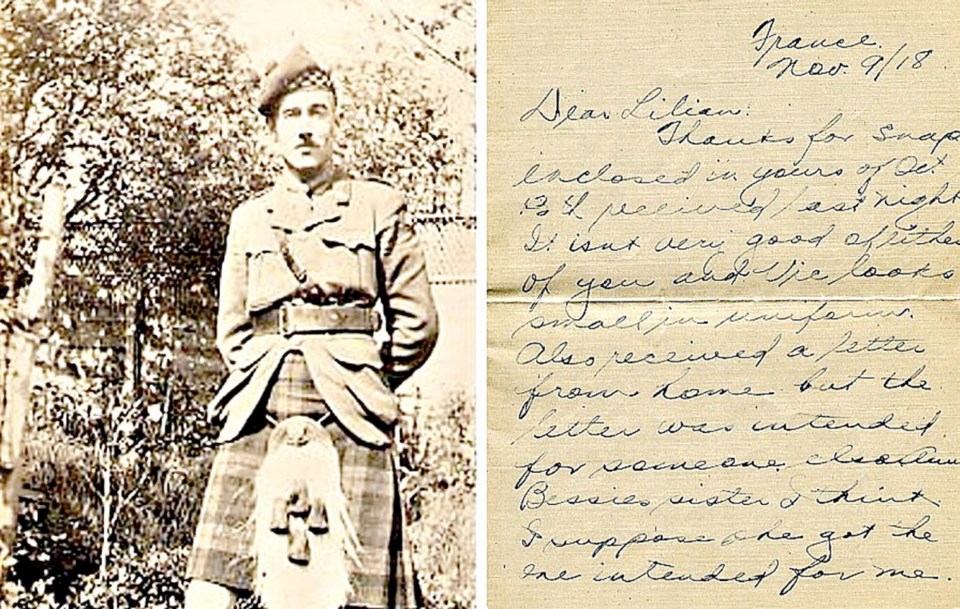Professional actors and other Canadian celebrities have been enlisted to bring wartime letters to life, part of an online archive project.
Vancouver Island University’s Canadian Letters and Images Project has added an audio component to its online archive of letters. Actors, male and female, do the reading. But also included are other notable Canadians, including astronaut Chris Hadfield, Gov. Gen. David Johnston and hockey great Wayne Gretzky.
Most of the letters were sent during the First and Second World Wars. A few were sent during the Korean conflict, from Africa during the Boer Wars and even during the American Civil War.
Stephen Davies, Vancouver Island University history professor and co-ordinator of Canadian Letters and Images, said the goal of pulling in professional actors was at least partly to make the online archive more widely available, to the visually impaired, for example.
But Davies said the live reading of the letters has added a powerful human element.
For example, actor R.H. Thompson was reading a First World War veteran’s biography and noticed that he had been born in Lancashire, U.K., so he added that accent.
“For me, it was one of the most powerful readings,” Davies said.
“When we think of the Canadian Expeditionary Force, we forget about half of them were actually born in the U.K. So we might think of a standard Canadian accent. But if you were in the trenches, you would have heard this cacophony of accents: Welsh, Irish, English, Scottish and Canadian.”
Canadian Letters and Images is a unique archival experience. Letters are collected from interested citizens and scanned; a typed transcript is prepared to accompany the handwriting. The letters are then returned as valuable family artifacts.
So far, about 25,000 letters have been collected, and plans are afoot to enlist university drama students to read them. That would fit in well with the historical reality that so many soldiers were barely out of their teens.
Davies said an attempt has also been made to find women’s letters and have Canadian actresses read them.
The letters were from nurses and other women’s forces members, but some were sent by women to men overseas.
Davies found a discernible difference in tone between the letters from the First World War trenches and those sent during the Second World War.
During the 1914-18 war, the tone of the letters is stoic, as the writers recite with almost casual matter-of-factness horrible incidents of death and destruction.
“There is this almost nonchalance in what they were writing about and even experiencing,” Davies said.
“I wouldn’t say there was any special loss of innocence by the time of World War II,” he said. “But their sense of reality is different.”
You can find the Canadian Letters and Images Project online at canadianletters.ca.
